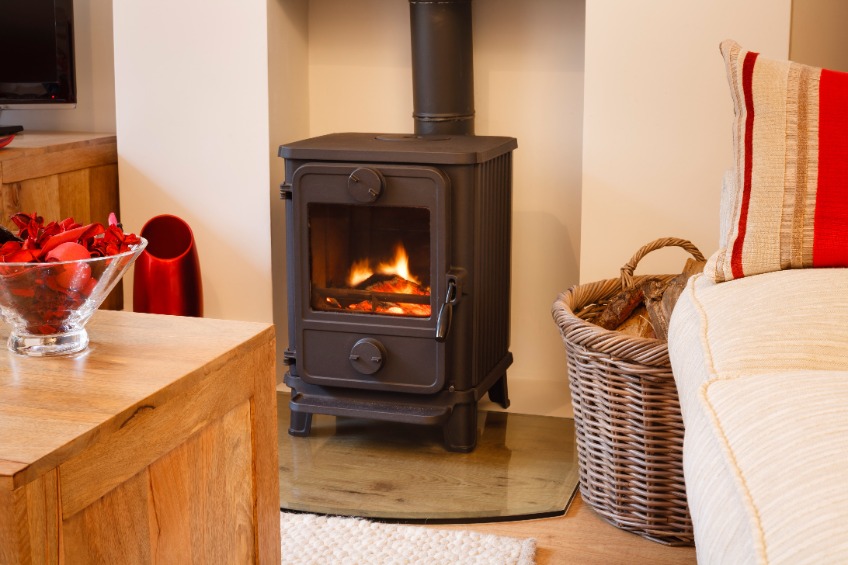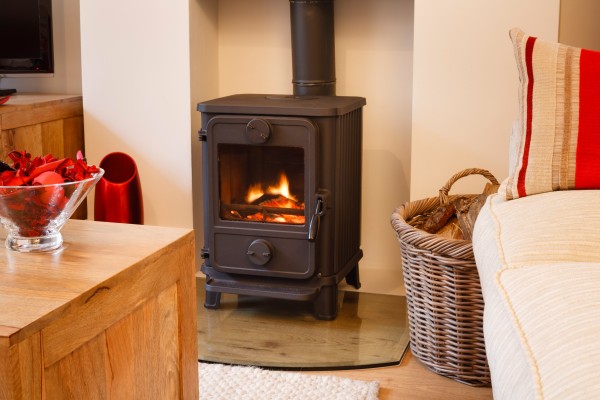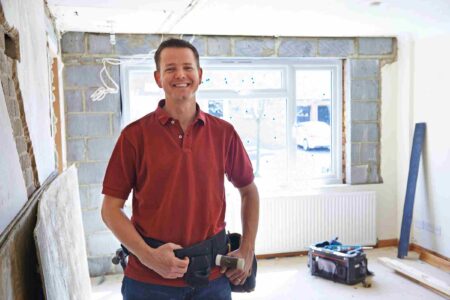
Log burners and multi fuel stoves are becoming increasingly popular. They generate more heat than a traditional open fire and create a sense of ambience in a larger living room. A log burner or multi fuel stove is a nice touch to a rental property, but what many landlords and homeowners don’t realise is that they may need building regulations approval prior to installation of the appliance.
Tenants Reported Unsafe Log Burner
A Gloucestershire landlord found this out the hard way after his tenants became concerned about the safety of the installation of a log burner in their rental property. They reported the landlord to the local environmental health department, who upon inspection found the wood burning stove breached six building regulations.
Wood Burning Stove Breached Building Regulations
Inspectors found that the flue wasn’t safe and there was no carbon monoxide detector. There was also insufficient air to the stove, which can lead to a build-up of carbon monoxide. As a result, South Gloucestershire Council decided to prosecute the landlord. He pleaded guilty and was fined £600 plus costs.
“Many people are installing wood burners and may not realise that they need building regulations approval,” said Councillor Colin Hunt.
“It’s important to contact your local authority to check if your installation requires building regulation permission. This investigation involved the collaboration of South Gloucestershire Council’s housing and building control teams and demonstrates our commitment to protect the safety of residents in their homes.”
What are Log Burner Regulations?

There are building regulations in place to protect homeowners from the risk of fire. Wood burners and multi-fuel stoves become extremely hot when they are on. If flammable materials are placed nearby, there is a risk of combustion.
Stoves and flue pipes can easily reach temperatures of 150+ degrees centigrade. If the worst happens and deposits inside the flue catch fire, the temperature will dramatically increase. Anything combustible near the flue pipe will catch fire, potentially burning the house down.
Log burners are usually placed in a fireplace or opening. A brick or stone fireplace or opening is fine and most stove fitters won’t have an issue with this arrangement. Greater care is needed when a log burner is installed outside of a fireplace opening.
Log Burners Should Have a Heat Resistant Shield
Plasterboard is classed as a combustible material, as are the wooden battens behind plasterboard. You can’t install a wood burner directly in front of a plasterboard covered wall. The wall will need to be protected by a heat-resistant shield. This shield must extend all the way up behind the flue pipe, if applicable. The material must be A1 fire-rated. There should also be a 12mm air gap between the combustible material and the heat shield.
There are purpose-designed wall-mounted heat shields, but they can be expensive. A cheaper alternative is to use the Hardiebacker cement board and paint it to suit the room’s décor. Hardiebacker boards are available from all good DIY outlets. Ensure there is a 12mm air gap between the Hardiebacker board and the wall. This is essential, even if you elect to fix tiles on to the board.
Edit: The following comment has been removed: “If you don’t want to leave a 12 mm gap, cut away the plasterboard and replace it with a section of Hardiebacker board.” Thank you to Gumbear9 for pointing out that a 12mm gap still needs to be left because plasterboard is usually mounted on timber.
Timber Beams and Wooden Fire Surrounds Must be Kept Away from a Wood Burner Flue Pipe
Oak beams and wooden fire surrounds might look aesthetically pleasing, but care must be taken, as wood is a combustible material. The only time when you might not have to worry is if your fireplace is a huge inglenook. There are also wood-effect resin beams, which look identical to oak, yet are non-combustible.
Log burner regulations state that wooden lintels and fire surrounds must be at least 15 inches away from the flue pipe. A twin wall flue pipe is useful if you need to shield a wooden beam from the flue pipe. An alternative is to use a heat shield behind the fire surround, but bear in mind that it might be visible if the stove opening is relatively small.
CO Detector Must be Provided for Properties with Log Burners
Always have a CO detector in the same room as your multi-fuel or log burning stove. Like any solid fuel burning appliance, carbon-monoxide is always a risk. If the stove has been properly fitted by a professional, the risk is low, but nevertheless, a CO detector must be fitted.
Document J – Building Regulations for Log Burners
More information about applicable wood burner regulations can be found in Document J.
What are Landlord Responsibilities for Wood Burners?

All wood burning stoves fitted after 2011 must have an installation certificate. This means you must use a professional HETAS registered installer.
Your insurance company must be informed there is a solid fuel appliance like a wood burner in the property – this is also the case if the property has an open fire.
Make sure there are smoke detectors fitted on every level. Install hard-wired smoke detectors to prevent tenants removing batteries.
Helping Tenants use a Log Burner Responsibly
Landlords have a duty of care to ensure their tenants are safe at all times. Most tenants will be delighted to see there is a wood burner in the property, but make sure they know how to use the stove. Provide instructions for the wood burner and, if necessary, give them a demo so they know how to light the stove.
Ensure your tenants understand what type of fuel they can burn. You can burn logs and anthracite on a multi-fuel stove. You can’t burn normal house coal.
When burning timber, make sure the wood is seasoned. Fresh timber is full of moisture and sap. It burns poorly and gives off a lot of acrid smoke. It also causes a build-up of deposits on the glass and in the flue. Advise tenants where to purchase suitable logs. If you run a holiday let, make sure a stock of timber is readily available.
Chimneys must be swept once a year. Use a reputable chimney sweep. Put a note in your diary and remind your tenants. Bear in mind that chimney sweeps tend to be busier over winter, so book your sweep well in advance.
It is sensible to include dos and don’ts on the rental agreement, so if your tenants don’t follow the guidelines and the stove is damaged, you can claim the cost of repair or replacement. Give your tenants two copies of the stove guidelines and ask them to sign one copy to confirm they have read it.
Log burners are a wonderful addition to any property, but only when installed and used responsibly! If you need more advice on how to install a wood burner or multi-fuel stove, speak to a HETAS approved installer.



